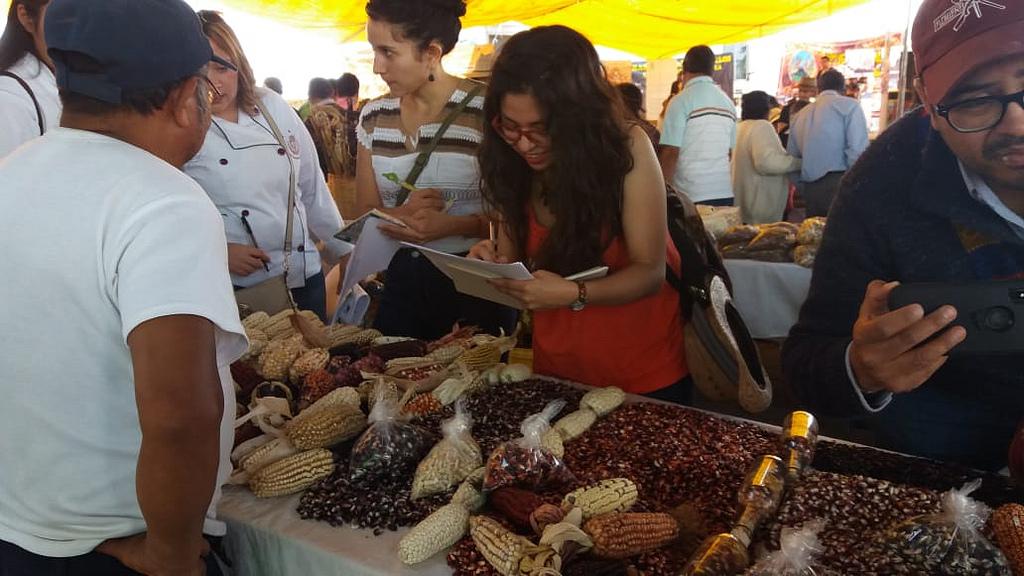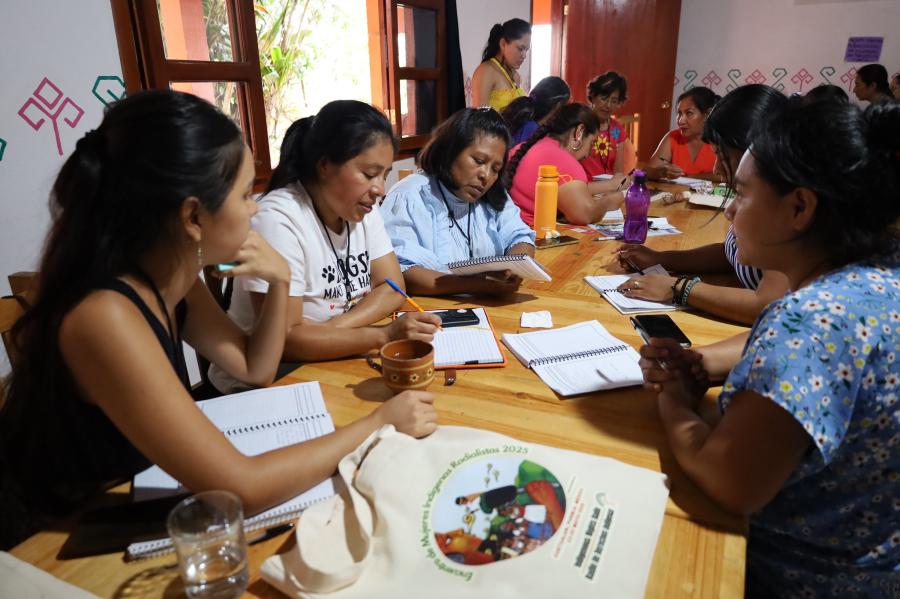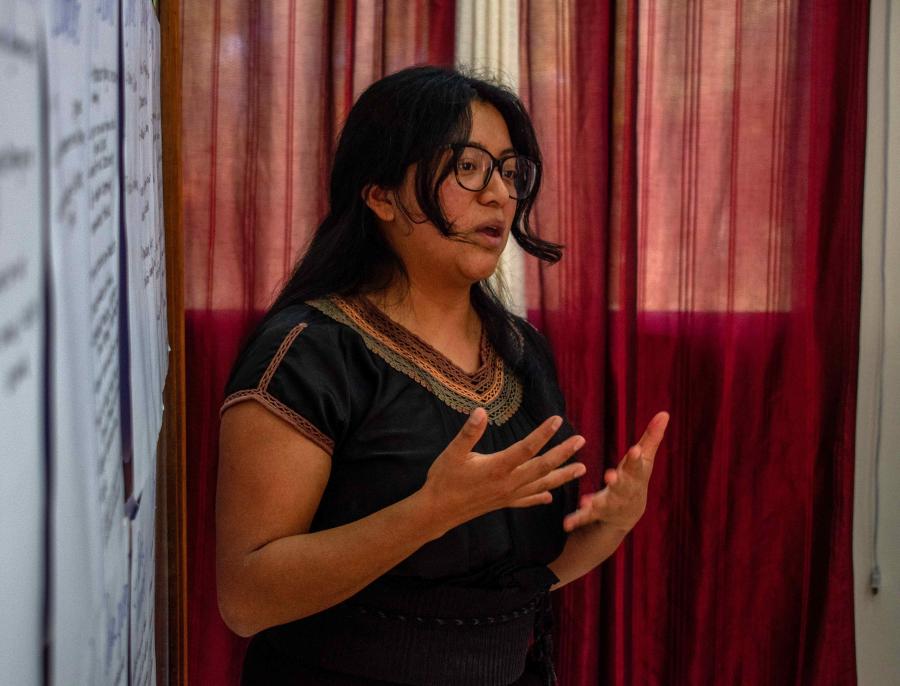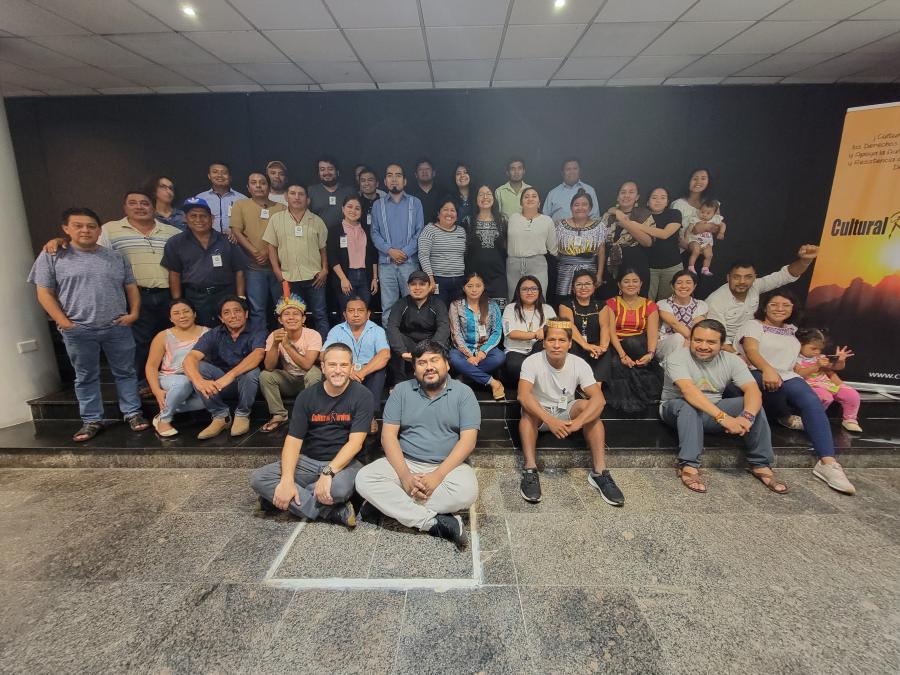
"For life, there must be corn and Mother Earth, but Mother Earth must be healthy." - Carmen Lozano (Kichwa) Ecuador
The 4th International Indigenous Peoples Corn Conference, "For Our Ancestral Rights, We Protect and Guarantee Our Food Sovereignty and That of Our Future Generations," took place on March 7 - 8, 2019, in the community of Vicente Guerrero, Tlaxcala, Mexico. Over 75 participants from different Indigenous communities from the Americas shared their experiences, challenges, and solutions about living with and cultivating corn.
“We are like a corn husked and watered on all sides, we are all a variety of corn,” stated Carmen Lozano. Elder Duane ‘Chili’ Yazzie (Diné) commented, “We come from four worlds, this is the fourth world and we are four peoples. The blacks take care of the water, the blue ones the air, the white ones the fire and we, the dark ones, take care of the earth. Corn is a must to live.The first woman was given corn, a symbol of fertility. As the first people, we feel the pain of Mother Earth.”

Maize and Indigenous communities have a mutual relationship dependent on each other and have evolved together. Maize has been a main food staple that has sustained Indigenous cultures, and for that reason Indigenous Peoples consider it a sacred plant that contains knowledge and history and should not be commodified. The corn grows in the diverse conditions and latitudes, as participants noted, in the arid, rainy, mountainous zones, in low and high altitude.
Indigenous Peoples are faced with numerous challenges. Sebastián (P’urépecha) from Michoacán, Mexico, linked the challenges to Indigenous teachings, “The evil spirit should not exist, but we made it present. The good spirit connects us with the cosmos and the earth. We have lost and the good spirit is absent, that is why there are so many problems and diseases.” Indigenous territories are being threatened by megaprojects and the policies that benefit corporations, climate change affects food systems, making crops more vulnerable and leading to the abandonment of the countryside. Genetically modified corn and the laws that promote its cultivation are one of the main threats which undermine Indigenous knowledge about corn. The dispossession of land and water from communities to supply extractive megaprojects such as mining, oil, and transport projects, puts communities at risk.

In spite of the diverse problems, various strategies are being carried out at local and international levels. At the local level, communities are asserting and maintaining their traditional knowledge and their forms of production. They are recovering lost knowledge and applying new productive strategies to fertilize land and use natural pest control. Fairs where Indigenous communities travel to exchange heritage seeds are an example of how this knowledge is being revitalized. The daily work in the field is the most arduous, to conserve the corn you have to sow it, care for it, and harvest it. Indigenous and campesino communities carry out this work every day, despite low prices of corn and the loss of harvests due to climate change. To strengthen all community work, at the international level, organizations and individuals are advocating for international policies to protect maize, Indigenous rights, and lands. There has been much joint work and conferences such as this one held in Tlaxcala, pay tribute to efforts to protect corn diversity.
During the conference, the participation of young people was of great importance, making it clear that youth are actively participating in their communities, using their institutional education, and are reconnecting to traditional knowledge of their communities in search of solutions to today’s problems. Contrary to what adults may think, youth are interested in participating more actively. As Jesús Campeche stated, “Young people are not choosing to leave their communities, they are being forced out for various reasons. Young people are the future but they need the elders to teach them how to do it.”
The conference was a space where communities from the North and South of the continent, speaking different languages and living different ways of life, could unite and share their experiences. Those gathered at the event will return to home communities to share what they have learned with the firm decision to continue fighting to conserve Indigenous corn.
The Integral Rural Development Project Vicente Guerrero served as host of the conference. Sponsors included the International Indian Treaty Council (IITC), the Assembly of Indigenous Peoples for Food Sovereignty in Mexico (APISA), and Cultural Survival served as a co-sponsor along with the Alliance of North American Indigenous Food Sovereignty (NAFSA), Alliance Milpa and the Alliance of Indigenous Peoples on Food Sovereignty, Traditional Knowledge and Climate Change.
Check out our photos from the conference here.



